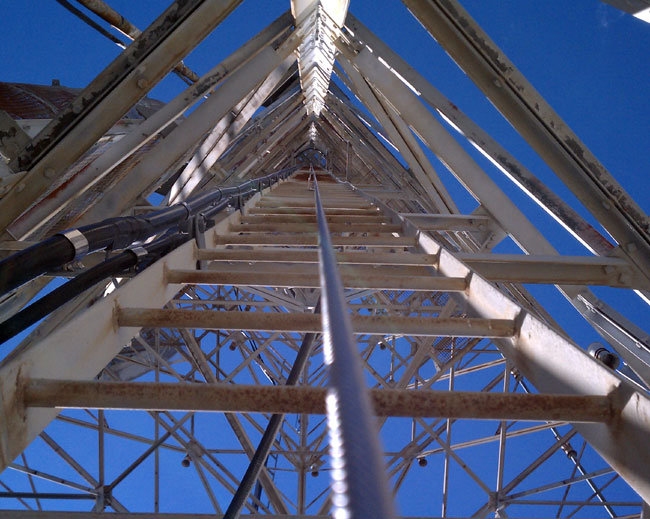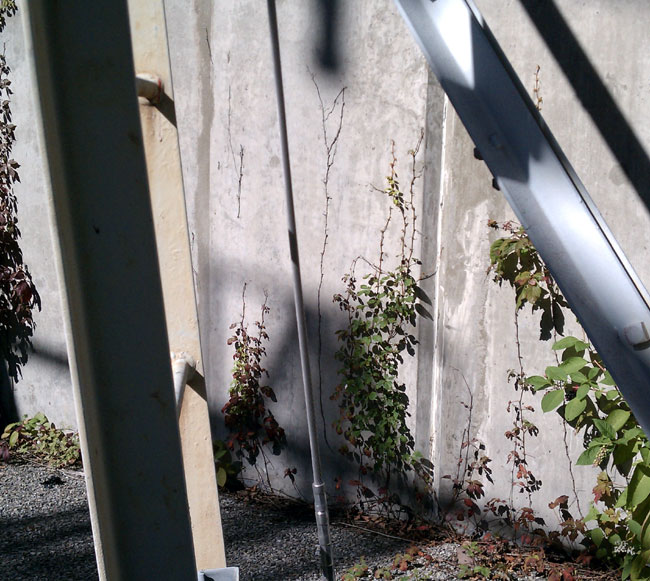The tower climbing video that has gone nearly viral pointed out a few things. Climbing towers is a dangerous business, best left to those who are trained for it and have the insurance.
It is true that tower climbing contractors have the responsibility to protect their own workers while working on a client’s tower. That does not completely absolve the tower owner from liability. It is incumbent on the tower owner to provide a safe structure to climb. This can mean the mechanical integrity of the tower, reduction of transmitter power while workers are in high RF energy fields, and providing the proper permanently attached safety equipment on the tower itself; Climbing ladders, ladder safety cages, rungs, elevators, and fall arresting gear.
In that tower video post, I mentioned something called a safety climb. That is a cable, usually 3/8 inch stainless steel aircraft cable, attached, about eight inches from the climbing surface like this:

The tower itself was built in 1959 and did not have this equipment when new. This was a retro fit kit, installed in 2003, I believe.
The tower climber wears a harness with a special karabiner attached to the front and waist level. When climbing this ladder, the karabiner slides up the cable. If he were to fall, the karabiner has an auto-locking or braking mechanism that would stop his fall.

Many tower climbers, especially those that have been in the business for a while, do not like these things. When climbing, especially if one has long legs, the tendency is to bump your knees on the bottom of the next ladder rung. This is because the belt holds the climber’s waist making it difficult to get the rear end out, away from the ladder the way most people like to climb. The alternative is to climb with the knees spread apart, like a frog, which is hard on the hamstrings and quite literally, a pain in the ass. However, if a tower is so equipped, it must be used.
I have, wherever possible, retrofitted towers with these devices. Of course, all new towers come equipped with them. In some situations, it is not possible to retrofit towers with safety climbs, either because there is no attachment point at the top of the tower that meets the OHSA spec, there is not a climbing ladder, or it would affect the tower tuning, as in an AM tower or near a TV or FM antenna.
Hundreds of gallons of ink have been spilled by Los Federals in OHSA regulations 29 CFR 1926 and 29 CFR 1910.268(g) regarding fall protection and fall protection equipment for telecommunications workers. In this litigious world, we live in, tower owners and or their on-site representatives should know these rules and make sure they are followed.
